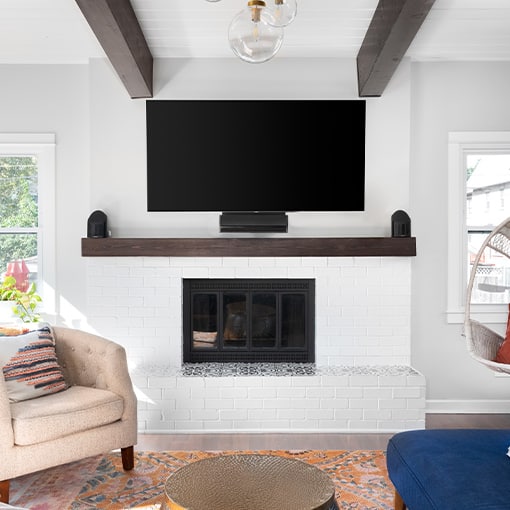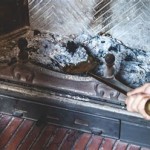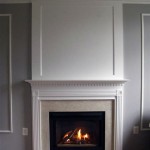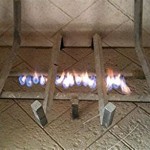Can I Mount a TV Over My Fireplace: Considerations and Best Practices
Mounting a television over a fireplace is a popular design choice in modern homes. It offers a centralized entertainment hub and can save valuable floor space. However, this arrangement presents several challenges that must be carefully considered to ensure the longevity of the television, the safety of the installation, and the overall aesthetic appeal of the space.
Before proceeding with this project, it is crucial to evaluate several factors, including heat exposure, viewing angle, mounting surface suitability, and cable management. Ignoring these considerations can lead to costly repairs, impaired viewing experience, or even safety hazards.
Addressing the Heat Factor
One of the primary concerns when mounting a television above a fireplace is the potential for heat damage. Fireplaces, whether gas, electric, or wood-burning, generate significant heat that rises and can accumulate around the television. Excessive heat can damage a television's internal components, shorten its lifespan, and even void the manufacturer's warranty.
The degree to which a fireplace affects a television depends on several factors: the type of fireplace, the frequency and duration of use, and the distance between the fireplace and the television. Gas fireplaces tend to produce more consistent and predictable heat output, while wood-burning fireplaces can produce intense bursts of heat and soot.
To mitigate the risk of heat damage, several strategies can be employed. First, consider the installation height. Mounting the television as high as possible above the fireplace will increase the distance between the heat source and the electronic device. Second, installing a mantel can act as a heat shield, deflecting rising heat away from the television. A deeper mantel offers more protection than a shallow one. Third, using a fireplace insert or glass doors can help contain the heat and reduce its overall impact on the surrounding area. Finally, monitoring the temperature above the fireplace is crucial. Use a thermometer to gauge the heat levels when the fireplace is in use. If the temperature consistently exceeds the manufacturer's recommended operating range for the television (typically found in the owner's manual), alternative mounting locations should be considered.
Ventilation is another critical aspect. Ensuring adequate airflow around the television allows heat to dissipate more effectively. Avoid enclosing the television in a tight recess or cabinet that restricts airflow. Consider installing ventilation fans if necessary to circulate air and prevent heat buildup.
Optimizing the Viewing Angle
Another significant factor to consider is the viewing angle. Mounting a television high above a fireplace often results in an uncomfortable viewing experience, requiring viewers to crane their necks upwards for extended periods. This can lead to neck strain, headaches, and overall discomfort.
The ideal viewing angle is generally considered to be when the viewer's eyes are level with the center of the screen when seated. This minimizes neck strain and provides the most comfortable viewing experience. To determine the optimal mounting height, measure the distance from the floor to the viewer's eye level when seated. Then, subtract half the height of the television screen from that measurement. The resulting number is the ideal height for the bottom of the television screen.
If mounting the television at the ideal height above the fireplace is not feasible due to space constraints or aesthetic considerations, consider using a tilting mount. A tilting mount allows the television to be angled downwards, compensating for the elevated position and improving the viewing angle. However, even with a tilting mount, excessive height can still lead to discomfort. Therefore, it is crucial to strike a balance between aesthetics, heat mitigation, and viewing comfort.
The size of the television also plays a role in the viewing experience. Larger screens generally require a greater viewing distance. If the viewing distance is too short, the image may appear blurry or distorted. Conversely, if the viewing distance is too long, the image may appear too small. Therefore, it is important to choose a television size that is appropriate for the room and the viewing distance.
Assessing Mounting Surface and Cable Management
The structural integrity of the wall above the fireplace is another critical factor to consider. The wall must be strong enough to support the weight of the television and the mounting bracket. Most televisions are relatively lightweight, but larger models can weigh upwards of 50 pounds or more. The mounting bracket itself can also add to the overall weight.
Before mounting the television, it is essential to identify the wall studs. Wall studs are vertical framing members that provide structural support. Use a stud finder to locate the studs and ensure that the mounting bracket is securely attached to them. If the studs are not located in the desired position, it may be necessary to add additional framing to provide adequate support. In some cases, such as mounting on a brick or stone fireplace surround, specialized mounting hardware and techniques may be required. It is advisable to consult with a professional installer to ensure that the installation is safe and secure.
Cable management is often overlooked but is an essential aspect of a clean and professional television installation. Running power cables, HDMI cables, and other wires across the wall can create an unsightly mess. To avoid this, consider using cable management solutions such as cable concealers or in-wall cable routing kits.
Cable concealers are plastic or metal channels that are mounted to the wall to hide cables. They are available in various sizes and colors to match the decor. In-wall cable routing kits allow cables to be run inside the wall, creating a completely clean and seamless look. However, in-wall cable routing requires more extensive preparation and may not be suitable for all types of walls.
When planning the cable management, it is important to consider the location of power outlets and other electrical connections. If necessary, consider having an electrician install additional outlets near the television mounting location. This will minimize the need for extension cords and power strips, which can be unsightly and pose a safety hazard.
Furthermore, consider the future needs of the entertainment system. Will additional devices, such as a soundbar, gaming console, or streaming device, be added in the future? Plan the cable management accordingly to accommodate these additional devices. Leaving extra cable length can also be helpful for future adjustments or replacements.
Alternative Mounting Options and Professional Assistance
If mounting a television above a fireplace proves impractical due to heat concerns, viewing angle limitations, or structural issues, alternative mounting options should be explored. Consider mounting the television on a nearby wall, placing it on a stand or console, or using a ceiling mount.
Mounting the television on a nearby wall allows for greater flexibility in terms of placement and viewing angle. It also eliminates the risk of heat damage from the fireplace. Placing the television on a stand or console is a simple and cost-effective solution, but it may take up valuable floor space. Ceiling mounts are a less common option but can be useful in situations where wall space is limited.
Regardless of the chosen mounting method, it is always advisable to seek professional assistance if you are unsure about any aspect of the installation. A professional installer can assess the situation, provide expert advice, and ensure that the television is mounted safely and securely. They also have the tools and experience to handle complex installations, such as mounting on brick or stone fireplaces or routing cables inside walls.
Engaging a professional installer not only ensures a safe and aesthetically pleasing installation but also provides peace of mind. They can address any potential problems that may arise and ensure that the installation is in compliance with local building codes. The cost of professional installation may seem high, but it is often a worthwhile investment in the long run, preventing costly repairs and ensuring the safety of your home.
In conclusion, mounting a television above a fireplace can be a visually appealing and space-saving design choice. However, it is crucial to carefully consider the potential challenges and implement appropriate strategies to mitigate them. By addressing heat exposure, optimizing the viewing angle, assessing the mounting surface, and managing cables effectively, it is possible to create a comfortable and safe entertainment space that enhances the overall aesthetic of the home. When in doubt, seeking professional assistance is always recommended to ensure a successful and worry-free installation.

Can I Mount My Tv Above The Fireplace
Can I Mount A Tv Over My Fireplace Heatilator

Can I Mount My Tv Above The Fireplace

Is It Safe To Mount Your Tv Above The Fireplace Chimney And Wildlife

Can You Put A Tv Over Fireplace Direct Fireplaces

3 Alternatives To Mounting Your Television Above The Fireplace Avs

Can I Mount A Tv Over My Fireplace Warming Trends

Safely Mount A Tv Above An Electric Fireplace Touchstone Home S Inc

How To Mount A Tv Over Fireplace Vertical Chimney Care

Ortal S Innovative Technology Makes It Safe To Mount A Tv Above Your Fireplace








